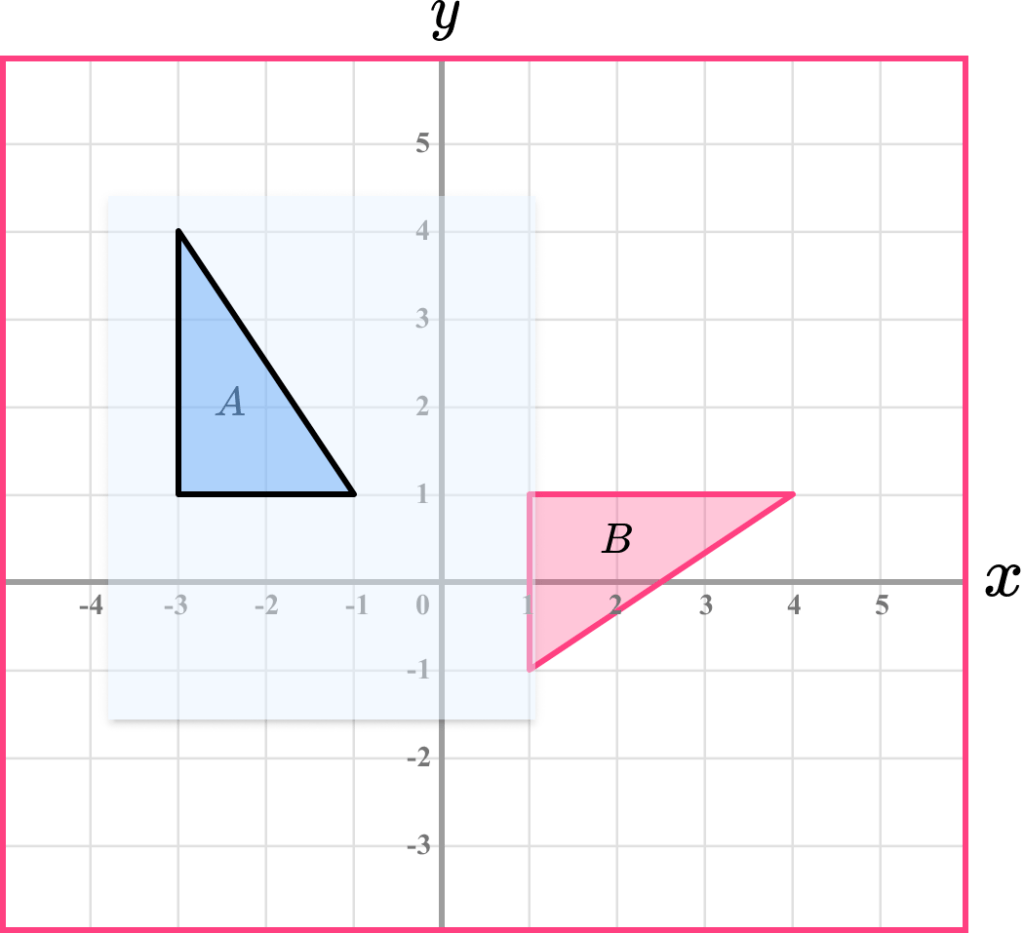This doesn't change during a most transformations.
What is the size?
The word that describes translating.
What is sliding?
This word is another way of saying reflecting
What is flipping?
The given graph represents transformations of the pre-image *. This figure depicts a Rotation of the pre-image 180 degrees clockwise about the origin.
What is figure C?
Name the rotation rule.

What is rotate 180?
These are the types of transformations that does not change the size.
What are reflections, translations, and rotations?

What is (x,y)----> (x+5,y+3) or 5 to the right, up 3?
This coordinate changes when a figure is reflected over the y-axis.
What is the x-coordinate?
The given graph depicts transformations of the pre-image *. This triangle represents a Rotations of * 90-degrees counterclockwise about the origin. 
What is figure B?
How did this shape rotate?

What is clockwise 90 degrees?
The picture below shows this type of transformation.

What is rotating?
This is the image coordinate pair when the preimage (1, 6) is translated to the left 3 and down 1.
What is (-2, 5)?
This coordinate changes when a figure is reflected over the x-axis.
What is the y-coordinate?
The given graph depict multiple transformations of the pre-image *. This image depicts a Reflection of * across the y-axis.
What is D?
Name the rotation.

What is 90 degrees clockwise?
This notation(symbol) is how we differentiate the preimage from the image.
(Hint: A')
What is prime?
Translate this image 4 units to the right, and 3 units down. The new coordinate for C is...

What is (1,2)?
The figure has been reflected over this line.

What is the x-axis?
Name the transformation.
What is dilation and translation?
Name the rotation.
What is 180 degrees?
This figure is the image in the following reflection:

What is the blue figure?
The shapes are translated in this direction these many units.

What is left two units, up two units?
This is the coordinate A' after the figure below has been reflected over the given line.

What is (6, 1)?
Name the transformations happening. (Make sure to pay attention to the prime symbols).
What is translation, followed by reflection?
Rotate counterclockwiese 270 degrees and name the new coordinate for B.

What is (2,-5)?
These transformations does preserve congruency (same size) of a given figure.
What is translation, reflection, rotations?
The translated coordinate of B.

What is (5,5)?
The rule for the given rigid transformation.
What is a Reflection across Horizontal y=1?
These two transformations have occurred to the given figure. 
What is a Reflection across the x-axis and then translated 10 units right and 2 units up.
A line segment is rotated about the origin. The preimage, ___ AB , is located at A(−5, 3) and B(1, −2). The image A'B' is located at A'(5, −3) and B'(−1, 2). How many degrees was the line segment rotated clockwise about the origin?
Here is the rule: (x,y)--->(-x,-y)
What is a 180 degree rotation?
This transformation does not preserve congruency (same size).
What is dilation?
Describe the translation.

What is (x,y)---> (x+6,y+1) or to the right 6, up 1?
Reflected over the y-axis, what is the new coordinate for each point? (A,B,&C)

What is:
A': (5,2)
B': (3,1)
C': (2,5)
Name the transformation.

What is reflection and then rotation?
The triangle ∆KUB is located at K(−4, 3), U(−1, 6) and B(2, 0). It is rotated 90° counterclockwise about the origin. What are the coordinates of K', U', and B'?
What is:
K': (-3,-4)
U': (-6,-1)
B': (2,0)

